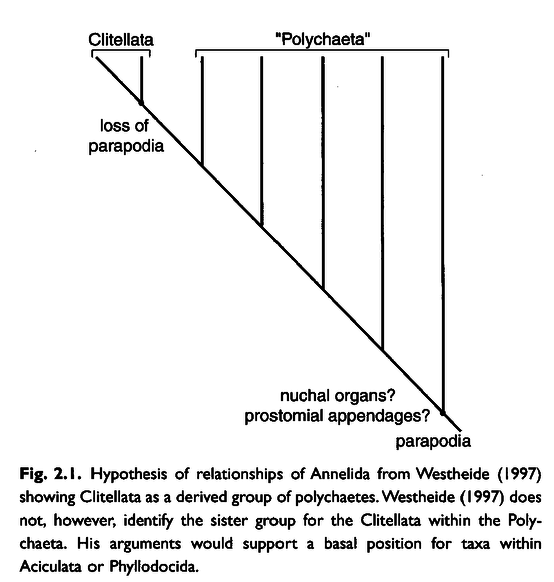Systematics
In 1866 de Quatrefages classified polychaetes as a group divided into two subclasses: Errantia and Sedentaria separating the free living and highly mobile worms than those sedentary ones. Dales (1962) used structural relations to reject the concept of Errantia and Sedentaria creating 14 equally ranked orders using bucal organs and nephridial structures to create those groups. Later in 1977 Fauchald created a similar systematic organization which comprised 17 equally ranked orders mostly similar to those of Dales, but Fauchald stated that the sequence of families would indicate an increasing morphological distance from the polychaete ancestral, what would implies that the groups Terebellida and Sabellida could be considered more apomorphic than the other taxa listed first.
A recent classification by Hartmann-Schroder (1996) includes 22 orders with a few differences from the previous authors. In 1997 McHugh used sequences of nuclear genes for phylogenetic analysis, they found that Clitellata inside various polychaetes groups, the conflict between morphological and molecular analysis could be caused by many factors such as Clitellata could have lost many morphological features and further morphological studies would uncover these losses. Nielsen (1995) also included Echiura in Annelida due to the presence of chaetae and Echiura have lost segmentation. The group Pogonophora were also included in Annelida by Rouse and Fauchald (1997) being classified as a derived clade of polychaetes found closely to Terebellida/Sabellida clades.
 |